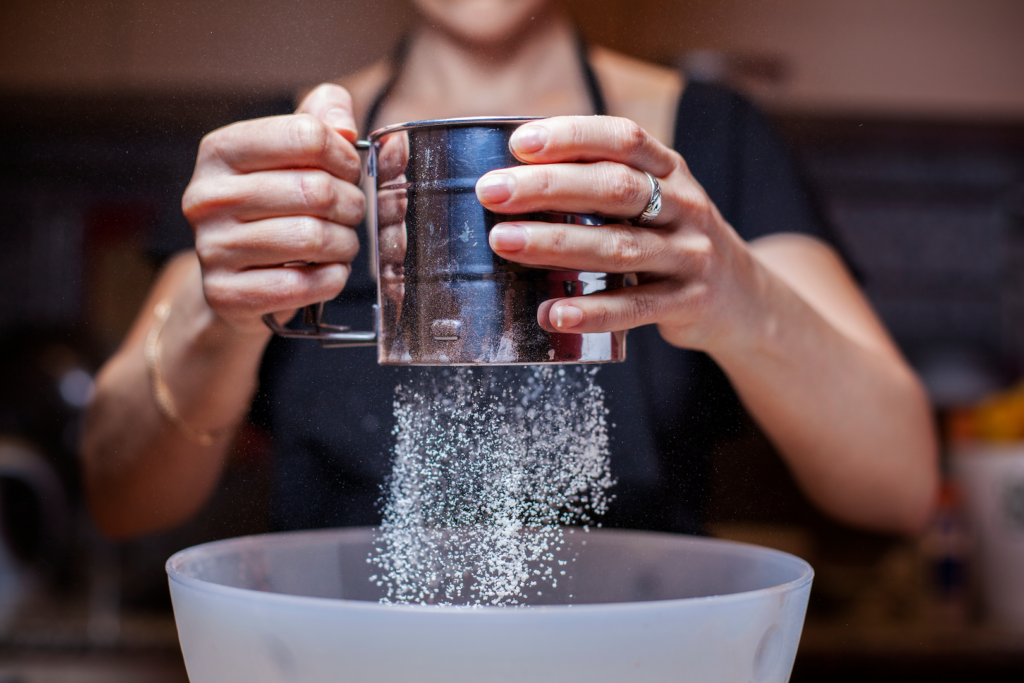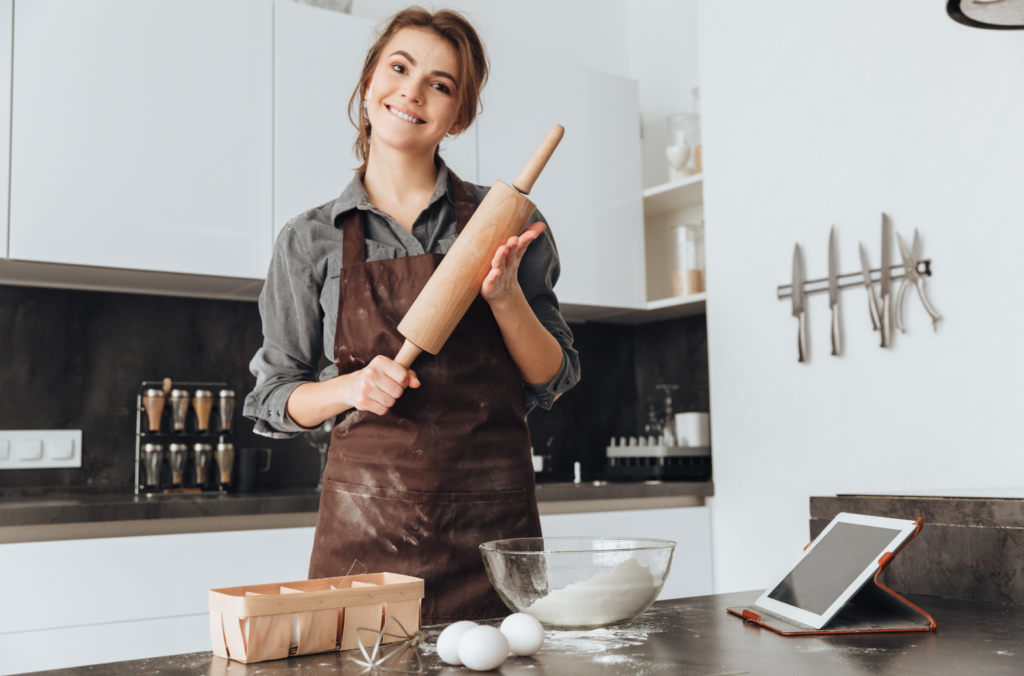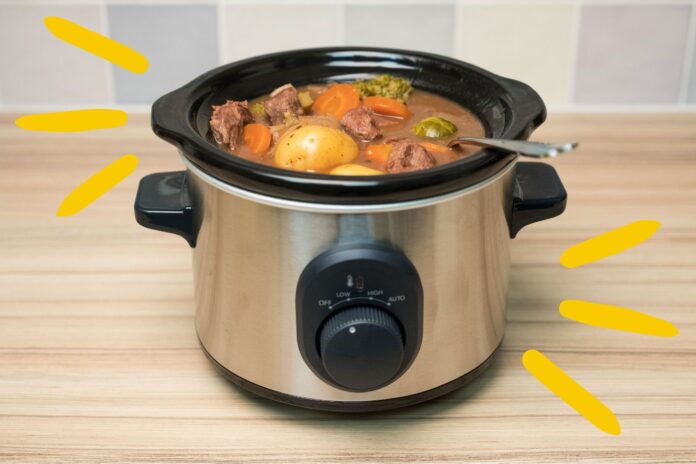Baking is an art that requires precision, patience, and a deep understanding of the ingredients involved. For amateur bakers, it’s especially crucial to grasp the vital role that key ingredients play in the baking process, as this knowledge can significantly impact the quality of their bakes, elevating them to dizzy new heights in the most dexterous, well-informed of hands.
The foundation of any successful bake lies in the harmony between its core components: flour, sugar, fats, leaveners, eggs, salt, and dairy. Each ingredient serves a specific purpose, contributing to the texture, flavour, and appearance of the final product, and only in understanding each one’s role can budding bakers produce fault-free bakes.
This knowledge also empowers aspiring bakers to troubleshoot issues, make substitutions when necessary, and experiment with new techniques and flavour combinations, all in the time it takes to read an article. What’s not to love?
So, embark on your baking journey with confidence, armed with the knowledge of the essential ingredients and their functions, and watch your skills flourish, with this guide to the vital role of each ingredient in producing fault-free bakes.
Flour
Flour, a humble yet indispensable ingredient in the world of baking, plays a crucial role in determining the texture, structure, and overall success of your baked goods. As a key component in various recipes, from bread and cakes all the way to a proper gravy, flour is truly a must-have staple in every kitchen.
The magic of flour lies in its protein content, which affects the formation of gluten – an elastic network that provides structure to baked goods. When mixed with water, the proteins in wheat flour interact and form gluten, which stretches to contain the expanding leavening gases during rising. The protein content varies among different types of flour, resulting in diverse textures and structures in the final product.
For instance, cake flour, with its low protein content, yields a softer texture and lower-gluten end result, perfect for light and airy treats. On the other hand, bread flour, with its high protein content, produces a firmer texture and higher-gluten end result, ideal for chewy and sturdy yeast breads.
Also be aware that the choice between bleached and unbleached flour can also impact the performance of your baked goods. Bleached flour undergoes a chemical process that alters its protein structure, making it more suitable for delicate pastries, while unbleached flour retains its natural state and works well for most recipes.

Eggs
Eggs are truly the unsung heroes of the baking world. These versatile ingredients play a crucial role in creating the perfect texture, flavour and appearance of our favourite baked goods. From cakes and cookies to meringues and pastry creams, eggs work their magic in various ways, making them an indispensable part of any baker’s toolkit.
One of the primary functions of eggs in baking is providing structure and stability to batters and doughs. As the proteins in eggs coagulate during the baking process, they create a network that helps hold everything together, giving shape and form to the final product. This is especially important when working with light flours like pastry or cake flour, where eggs act as a binding agent to prevent the baked goods from becoming too crumbly or falling apart.
Eggs also contribute to the leavening process, helping baked goods rise and achieve a light, airy texture. When beaten, whole eggs or egg whites alone can incorporate air into the batter, creating a foam that expands in the oven and gives cakes and other treats their desired volume.
In addition to their structural benefits, eggs play a significant role in enhancing the flavour, colour, and aroma of baked goods. The yolks, rich in fat, add depth and tenderness to the final product, while the whites help create a lighter, more delicate texture. The natural yellow hue of egg yolks also lends a visually appealing golden-brown colour to the crust of pies and bread, making them look as delicious as they taste.
Moreover, eggs serve as emulsifiers, helping to create smooth batters and mixtures by blending ingredients that might not otherwise combine well, such as oil and water. This emulsifying action contributes to the overall volume and texture of the baked goods, ensuring a uniformly open cell structure and a desirable mouthfeel.
Sugar
Sugar, the sweet and seemingly simple ingredient, plays a surprisingly complex and crucial role in the world of baking. While it’s well-known for adding sweetness and flavour to our favourite treats, sugar also serves several other essential functions that contribute to the overall success of baked goods.
Firstly, sugar is responsible for the texture of our baked delights. When sugar and water molecules come together, they establish a strong bond that has a substantial impact on the texture in two ways: it keeps baked goods soft and moist, and it creates a tender crumb.
Because of the link that forms between sugar and water, items like icing, cakes, muffins, and brownies don’t dry out too quickly. Additionally, sugar interferes with the coagulation of proteins, resulting in a more tender and softer crumb when added to cake recipes.

Another important function of sugar in baking is its role in browning and caramelization. As sugar heats up, it caramelises, promoting the appealing golden-brown colour we associate with perfectly baked goods. This process also contributes to the formation of new aromas and flavours through the Maillard reaction, where sugar reacts with proteins in the presence of heat.
Sugar also plays a vital role in leavening. When sugar is creamed with butter or mixed with other liquid ingredients, it creates thousands of tiny air bubbles that lighten the batter. These bubbles enlarge and elevate the batter during baking, causing it to rise in the pan. Furthermore, sugar’s hygroscopic properties allow it to hold onto moisture, providing structure for gas expansion in the oven and promoting lift and rise in baked goods.
Lastly, sugar acts as a stabiliser in certain recipes, such as foam-type cakes, where it interacts with egg proteins to stabilise the whipped foam structure. This stabilisation is essential for achieving the desired texture and consistency in these delicate creations.
Fats
Fats, such as butter and oil, play a crucial role in the world of baking. They not only contribute to the flavour and richness of baked goods but also have a significant impact on their texture and structure.
Butter, a solid fat at room temperature, is known for its ability to create light and tender textures in cake batters. When creamed with sugar, it forms tiny air pockets that trap steam and carbon dioxide, allowing the cake to rise during baking. Additionally, the water content in butter evaporates, creating flaky layers essential for pie crusts and biscuits.
On the other hand, oil, a liquid fat at room temperature, contributes moistness to baked goods more reliably than butter. This is because oil remains liquid at room temperature, while butter solidifies. Oils and fats also reduce the development of gluten in baked products, giving them a crumbly texture. By breaking down gluten into shorter strands, fats and oils act as “shorteners,” coating the flour and preventing it from absorbing water, which hinders gluten formation.
When it comes to health, replacing butter with monounsaturated oils like olive oil can lead to better heart health outcomes and reduced bad cholesterol levels, as well as being much less likely to cause inflammation. Should the characteristic grassiness of olive oil not feel suitable for your next bake, it might be a good idea to consult an anti-inflammatory foods list for appropriate substitutions.
Substituting butter with a ‘healthy’ oil in baking can be done using a 3/4 ratio (e.g., replacing 1 cup of butter with ¾ cup of oil). For coconut oil, a 1:1 ratio can be used. It’s important to note that oil doesn’t provide the same leavening help as butter, which may result in a denser texture in some baked goods.
Other Leavening Agents
Though we’ve already mentioned the role of eggs, sugar and butter in the rising process, other leavening agents play a vital role in achieving fault-free bakes too.
Leavening agents play a crucial role in the world of baking, as they are responsible for giving baked goods their light and airy texture. These agents, which include baking soda, baking powder, yeast, and whipped egg whites, work through various chemical reactions to create gas bubbles that cause dough or batter to rise.
Baking soda, also known as sodium bicarbonate, is a popular leavening agent used in recipes like cakes, muffins, and cookies. When combined with an acidic ingredient and a liquid, baking soda becomes activated, producing carbon dioxide gas. This gas allows baked goods to rise and become fluffy, resulting in soft and tender treats. Yum!
On the other hand, baking powder is a two-in-one chemical leavening that combines sodium bicarbonate with a powdered acid, such as tartaric acid. When moistened, a chemical reaction occurs, producing carbon dioxide gas that inflates cookies, cakes, and pancakes. Baking powder eliminates the need for additional acidic ingredients, making it a versatile option for various recipes.
Yeast, a living organism, is another essential leavening agent used in bread-making. As yeast ferments sugars present in the dough, it produces carbon dioxide gas, causing the dough to rise and develop a light, airy texture. Yeast-leavened breads often have a distinct flavour and aroma, making them a favourite among many bakers.
Whipped egg whites also play a vital role in adding height, lightness, and delicate texture to baked goods. Beating or whisking egg whites stretches the protein strands and incorporates air into the mixture. This technique is commonly used in soufflés, cakes, and meringues, contributing to their signature fluffy and airy qualities.

Dairy
Dairy products hold a special place in the world of baking, playing a crucial role in creating perfect bakes that are not only delicious but also have an irresistible texture and appearance. From butter to milk, yoghurt to cream cheese, these ingredients are the secret weapons of bakers, helping them achieve the desired taste, texture, and colour in their baked goods.
One of the primary reasons dairy is vital in baking is its ability to provide moisture. Baked goods can easily become dry and crumbly without the right balance of ingredients, and dairy products help to keep them tender and moist. Additionally, dairy contributes to the soft crumb structure in cakes and bread, ensuring a delightful mouthfeel with every bite.
Dairy products also play a significant role in enhancing the flavour of baked goods. The rich, creamy taste of butter and milk adds depth and complexity to the overall flavour profile of cakes, cookies, and pastries. Moreover, dairy ingredients like yoghurt and buttermilk can impart a subtle tanginess that elevates the taste of various baked treats.
Another essential function of dairy in baking is its contribution to the browning process. The proteins and sugars present in dairy products, such as lactose, promote the Maillard reaction, which results in the characteristic golden-brown crust on bread, cookies, and biscuits. This not only makes the baked goods visually appealing but also adds a delightful crunch to their texture.
Furthermore, dairy ingredients like milk and cream can improve the stability of batters and doughs, thanks to their protein content. These proteins form a network within the mixture, strengthening its structure and allowing it to rise properly during baking. This results in baked goods with an even, consistent texture and a satisfyingly light crumb.
And with that valuable information now proving in that beautiful brain of yours, we can’t wait to taste your next bake!





